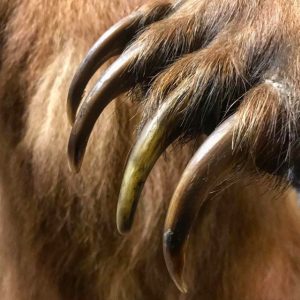These artists prove that Instagram has much more untapped potential than Amalia Ulman’s performance stunt or Richard Prince’s tired appropriation art. Some of them, like Stephen Shore, are established photographers who use Instagram as an extension of their larger practice. Others exploit Instagram’s diaristic qualities, parody its social norms, or use it as a curatorial platform to reach a large audience.
Peach & Me | @michel_e_b
The formula is simple: Vaporwave meets a tabby cat named Peach. @michel_e_b props a variety of mirrors against tiled surfaces, women’s bodies, and boulders, reflecting fragments of cat and sky in them. Sometimes the cat is wearing pink heart sunglasses. Sometimes its face is framed by a slice of bread. Here, it is a saint. The posts are pretty similar (same heart-shaped mirror, same disembodied orange paw waving in it) but the clever use of mirrors helps the feed retain its allure.
Dawn Kim | @dawn.kim
Kim’s feed is intriguing because it combines images from the photographer’s life, such as one of Corita Kent’s rules for students and teachers (often misattributed to John Cage), with more lyrical shots. In one particularly beautiful image, the cut face of a watermelon wrapped in plastic wrap reflects light like a pool of water. Her most recurring subject is sleeping families sprawled across subway seats like modern pietàs. Kim also co-founded the periodical Documentum with Stephen Shore and William Bowling to archive images and writing from Instagram.
Hawkeye Huey | @hawkeyehuey
Hawkeye Huey, age 8, has a pretty big advantage as a young photographer. His dad, Aaron Huey – who co-runs Hawkeye’s account – shoots for National Geographic. Huey has been shooting analog since age 4, and gets to tag along on his dad’s assignments and even contributes to the occasional magazine spread. A recent shot of young cowboys looking into the lens with a mixture of suspicion and uncertain bravado takes on greater resonance when you realize the shot was taken by someone half their age and half their height.
Brian Belott | @brianbelotti
Since I started following him several years ago, Brian Belott’s bio has remained the exact same. It reads, in full, “Norm Pie Problems? Eat dishwashing detergent. Calcify coordinates undulating near New Jersey.” In his studio practice, Belott works primarily in painting and sculpture. He’s made such varied pieces as collaged childrens’ board books, calculators made of rocks and glitter, and peanut butter and jelly “paintings” enclosed in rings of bread slices. But his Instagram is exclusively a curation of other people’s images culled from the depths of the internet (or maybe just DeviantArt), consisting of three similar images per post. Someone, somewhere, is still making weird, borderline miraculous stuff: scorpions made of binder clips, shaky whiteboard drawings of sheep eating bananas where the camera flash features prominently, a tin foil-covered man sitting on a couch. Recently, his feed has been mainly children’s art; he collects children’s art and curated a show of it at Gavin Brown’s Enterprise last year.
Meatwreck | @meatwreck
If there is a particular brand of internet surrealism — marked by disembodied hands, bad flash photography, and processed foods in bizarre places — Meatwreck is at its epicenter. The collaboration between L.A.-based artists Mitra Saboury and Derek Paul Jack Boyle is composed entirely of original material made for their feed. In one image, two gauzy curtains wear a pair of underpants; in another, a lit candle appears to be melting in someone’s ear. The aesthetic is similar to Brian Belott’s, but more unsettling and (unsurprisingly) featuring lots more meat.
Stephen Shore | @stephen.shore
Stephen Shore, a pioneer of color photography, now considers Instagram the focus of his creative practice. His long career, beginning when he sold a Museum of Modern Art curator three prints at age 14, has been marked by adoption of a wide range of popular photographic media. In the early 2000s, for example, he made a series of print-on-demand books using Apple’s iPhoto service. On Instagram, he posts the sort of images he is known for: quiet scenes of dusty towns and diner breakfasts, his cat, cloudy skies. At his MoMA retrospective last winter, visitors could swipe through his feed on iPads, raising the question of how Instagram should be displayed in the space of a gallery.













